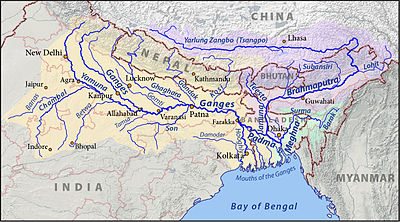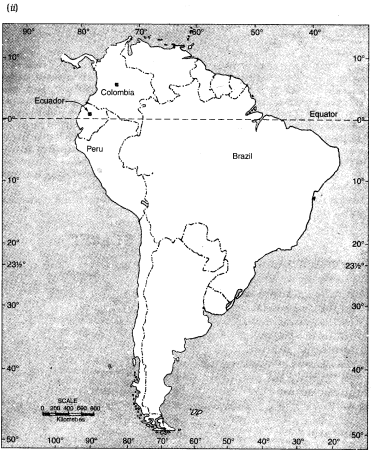Human Environment Interactions the Tropical - Solutions
CBSE Class –VII Social Science
NCERT Solutions
Geography Chapter 8
Human-Environment Interactions
The Tropical and the Subtropical Region
Q1. Answer the following questions.
- Name the continent in which the Amazon Basin is located.
- What are the crops grown by the people of the Amazon Basin?
- Name the birds that you are likely to find in the rainforests of the Amazon.
- What are the major cities located on the River Ganga?
- Where is the one-horned rhinoceros found?
Answers:
- The Amazon basin is located in South America.
- The people of the Amazon basin mainly grow tapioca, pineapple and sweet potato. They also grow cash crops like coffee, maize and cocoa.
- Toucans, hummingbirds and birds of paradise with their brilliantly coloured plumage are commonly found in the rainforests of the Amazon.
- Allahabad, Kanpur, Varanasi, Lucknow, Patna and Kolkata are the major cities located on the River Ganga.
- The one-horned rhinoceros is found in the Brahmaputra plain.
Q2.Tick the correct answer.
(i) Toucans are a type of
(a) birds (b) animals (c) crops
Ans:(a) birds
(ii) Manioc is the staple food of
(a) Ganga Basin (b) Africa (c) Amazon
Ans:(c) Amazon
(iii) Kolkata is located on the river
(a) Orange (b) Hooghly (c) Bhagirathi
Ans:(b) Hooghly
(iv) Deodars and firs are a type of
(a) Coniferous trees (b) Deciduous trees (c) shrubs
Ans:(a) Coniferous trees
(v) Bengal tiger is found in
(a) mountains (b) delta area (c) Amazon
Ans:(b) delta area
Q3. Match the following.
| (i) Cotton textile | (a) Assam |
| (ii) Maloca | (b) Terrace farming |
| (iii) Piranha | (c) Sericulture |
| (iv) Silkworm | (d) Slanting roof |
| (v) Kaziranga | (e) Ganga plain |
| (f) Varanasi | |
| (g) Fish |
Ans:
| (i) Cotton textile | (f) Varanasi |
| (ii) Maloca | (d) Slanting roof |
| (iii) Piranha | (g) Fish |
| (iv) Silkworm | (c) Sericulture |
| (v) Kaziranga | (a) Assam |
Q4. Give reasons.
(i) The rainforests are depleting.
(ii) Paddy is grown in the Ganga-Brahmaputra plains.
Answers: (i) Earlier, the green belt of rainforests covered about 12-14% of earth's land surface. Today, the rainforests cover only about 2-6% of the earth's land surface. Now, a large number of rainforests have been depleted because of:
- The developmental activities like- Large-scale developmental and industrial activities, Construction of roads and railway lines, Construction of houses, increase in area under agricultural land -are leading to gradual destruction of the biologically diverse rainforests.
- Clearing of land for mining
- The use of trees in industrial processes
- The need for wood for industrial processes
- Indigenous populations of rain-forests have been driven out who practiced conservation activities of forests and wildlife.
- Due to deforestation, the topsoil gets further washed away. As a result, there is no scope for the growth of trees. Hence, rainforests are depleting.
(ii) The reasons for the growth of paddy in the Ganga-Brahmaputra plains:
- The Ganga-Brahmaputra plains provide flat, fertile land with alluvial soil for the cultivation of crops.
- The amount of rainfall this region receives is also quite high, which makes it a suitable place for the growth of paddy, a crop that requires adequate water for its growth.
- Moreover, the temperature in this region is suitable for the growth of paddy.
- Cheap labour is available from the densely populated plains.
- Adequate means of transportation are there to raise and movement of paddy to the nearby markets.
- New technologies are being adopted by the farmers because they can afford it due to their sound financial position.
Q5. Map skills.
(i) Art an outline map of the Indian sub-continent, draw the rivers Ganga and Brahmaputra from the source to the mouth Also show the important tributaries of both the rivers.
(ii) On the political map of South America, draw the equator. Mark the countries through which the equator passes.
Answer:
(i)

